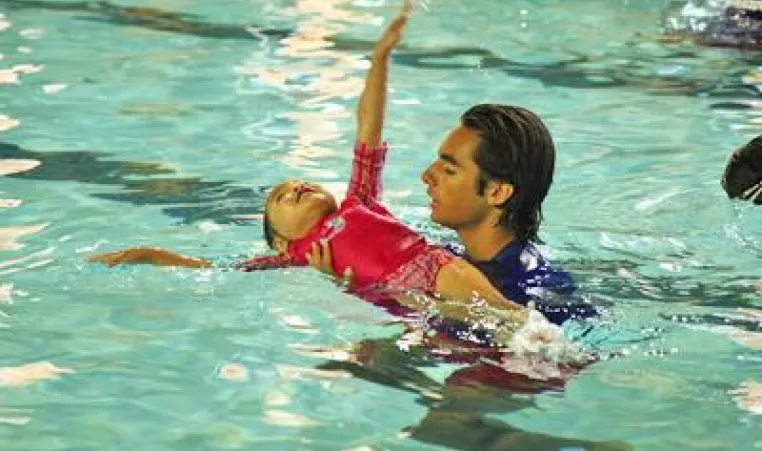
In the Fox Cities, we are fortunate to live in an area with easy access to water fun. Most families are already planning for activities such as going to the beach, fishing and swimming this summer. The Center for Disease Control lists drowning as the leading cause of death in children ages 1-4, and about 10 people die from unintentional drowning every day (Centers for Disease Control and Prevention, 2016). Now is the perfect time to take the necessary steps to keep our children and ourselves safe around the water.
Programs like the Y's Safety Around Water provide life-saving skills to children who would not normally have the opportunity to participate in swim lessons. The skills taught are not just applicable to the participants but anyone who is spending time around the water:
Jump, Push, Turn, Grab: A way to get back to the side of the pool when you are in water where you cannot touch.
Swim, Float, Swim: A technique used to help you catch your breath while swimming so that you can safely get to the nearest exit point.
Water safety should be important to all swimmers, no matter their ability level. There are simple steps you can take each time you are near or entering the water to ensure you have a fun and safe experience:
- Ask Permission - Children should ask permission from a parent or responsible adult before entering any body of water. The importance of this simple action is to be aware when your child is entering the water.
- Never Swim Alone - Even if you are an expert swimmer, it is important to remember that you should never swim alone. Children should always have an adult swimming with them, but for adults, it is also important to have someone swimming with you. You never know when a problem will arise, and it is best to be prepared for anything.
- Active Adult Supervision - The most effective defense in preventing drownings of any kind, especially with children, is active adult supervision. Whether you are swimming at a pool with lifeguards or in your own backyard, you can keep yourself and your children safe by staying aware. Parents need to be in the water with their children, even if the kids can swim. Always know where your child is and what they are doing. Waterparks and pools can be fun but there is often a lot going on, and while there are lifeguards, there is also many people. You are your child’s best protection when it comes to water safety.
- Personal Flotation Device - Life jackets are for everyone, not just non-swimmers! Life jackets are worn on boats or while fishing, but they can also be worn in the pool by non-swimmers and even by young children that know how to swim. Make sure that your life jacket is U.S. Coast Guard-approved and appropriate for your desired activity.
Take the time to educate yourself and your children about how to be safe in and around the water. Following these simple guidelines will help you and your family enjoy all of the water activities offered in our area.
References
Centers for Disease Control and Prevention. (2016, April 28). Unintentional Drownings: Get the facts. Retrieved from CDC: https://www.cdc.gov/homeandrecreationalsafety/water-safety/waterinjuries-factsheet.html